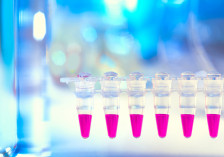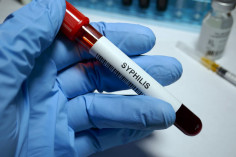Get Informed Topics Safer Sex & STIs STI Testing GETTING TESTED FOR STIS
GETTING TESTED FOR STIS
I’M REALLY NERVOUS ABOUT GOING! [each of these topics are hyperlinks at the top of the page you can click on and quickly navigate to: e.g. see https://sense.info/en/stis/types-stis/what-are-stis]
Don’t be! It’s really common to feel nervous at the thought of getting tested. However, to reassure you, most infections are easily treated.
For many people, whether it’s your first time or not, visiting a health clinic can cause a bit of anxiety. It may ease your worry if you know that:
- They’ve seen it all. Clinic staff see all kinds of things. After all, it’s their job. Staff are there to make your visit as comfortable as possible.
- It’s confidential. This means they won’t tell your parents, teachers or anyone else.
- You can be seen soon. Many clinics have walk-in hours where you can just show up and be seen.
WHAT WILL AN STI TEST INVOLVE?
First of all, the doctor or nurse will discuss with you what tests they think you will need and these tests will probably depend on how you answer some questions about your medical and sexual health.
These questions will include:
- when you last had sex
- whether you’ve had any unprotected sex
- whether you have any symptoms
It is recommended that you answer these questions as honestly as possible so you can get the help and advice you need. And there’s no need to be embarrassed! The people who work in sexual health clinics have seen and heard it all. Trust them!
The STI tests might involve:
- Giving a urine sample
- Giving a blood sample
- Taking swabs from the urethra - the tube urine comes out of
- Swabs from the vagina. You can often take these yourself
- An examination of (a look at) your genitals
These tests and examinations are nothing to worry about and the doctor or nurse will help you to feel comfortable.
Here’s a bit more about each type of test:
Swabs
The swab looks like a small cotton bud which is wiped over the vagina or from the tip of the penis. Very often you can take the swab from inside the vagina yourself. If you have had oral or anal sex then a swab may also be taken from either your throat or rectum. Taking the swab may be slightly uncomfortable but should not be painful.
Urine tests
A urine sample involves urinating into a small pot which your doctor or nurse will give you. You can collect the urine sample at any time of day (unless you are advised otherwise). You will also need to wash your hands before and after taking the urine sample.
Blood tests
A sample of blood is taken from your arm and sent off to a laboratory to be tested. This isn’t usually painful and you may feel a slight pricking sensation as the needle goes in. If you are worried or feel faint tell the health professional as they can help to make you feel more comfortable. After the needle has been removed they will apply pressure for a few minutes and a plaster/cotton wool pad will be left on. Some health care facilities can also test for some STIs via a finger prick blood test which can give results on the same day.
HOW IS EACH STI TESTED?
When you visit the clinic you will discuss which tests you will require with the doctor or nurse. Here is an overview of which tests are commonly used to diagnose each type of STI:
Chlamydia: tests usually involve giving a urine sample or taking a swab
Gonorrhea: tests usually involve taking a swab or giving a urine sample
Genital herpes: the doctor or nurse may be able to diagnose genital herpes by looking at the affected area – however taking a swab of fluid from a blister will confirm this
HIV: the most common way of testing for HIV involves taking a small sample of blood. HIV can be detected in the body four weeks after exposure to the virus
Syphilis: diagnosis usually involves an examination, followed by swabs (if there are sores) and a blood test. The blood test is usually repeated after three months
Pubic lice: diagnosis involves a health professional examining the area with a magnifying glass
Trichomonas’s: tested for by taking a swab or urine sample.
Genital warts: diagnosis involves a health professional examining the area
WHERE CAN I GET TESTED?
Find a clinic near you in the clinic finder here
HOW LONG WILL I WAIT FOR RESULTS?
With some tests, you can get the results – and treatment, if you need it – on the same day. For others, you might have to wait for a week or 2. If this is the case, the clinic will check how you would prefer to receive your results.
WHAT HAPPENS IF MY TEST SHOWS I’VE GOT AN STI?
If you test positive for an STI, meaning you have an STI, you will be asked to come back to the clinic to talk about your results and the treatment you need.
Most STIs can be easily treated with antibiotics. Some infections, such as HIV, have no cure, but there are treatments available. The clinic can advise you on these and put you in touch with a counsellor.
Your clinic will also encourage you to talk to your current partner and sometimes to your previous partners so they can be tested as well. If you like, the clinic can notify these contacts anonymously for you through ‘partner notification’ and not even mention your name.
Find a clinic near you in the clinic finder here
Frequently Asked Questions
Male Body
1 questions
See frequently asked questions on Male Body
Let's Talk
Facts, tips, stories and common questions
Go to Forum



